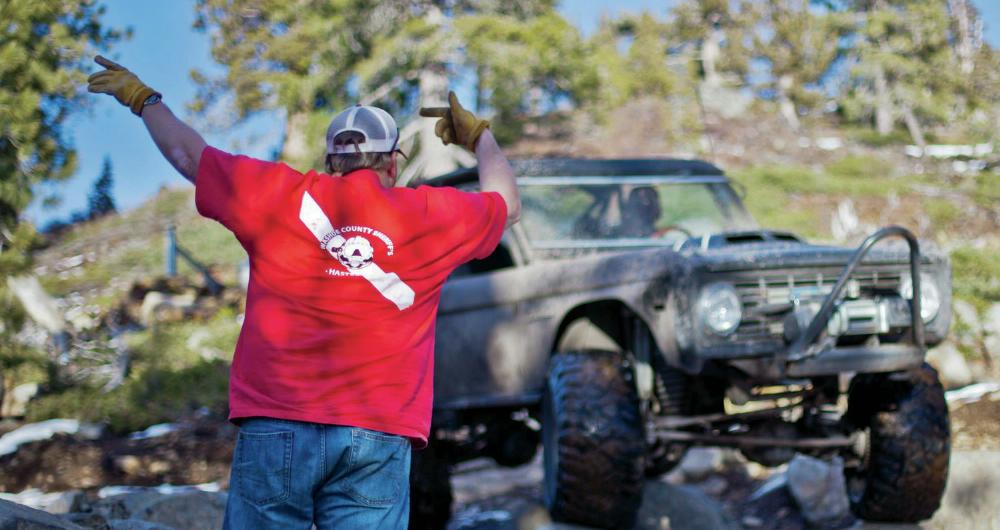
When off-roading, their comes a time when you can’t see the obstacles in front of you, and you need someone outside of the vehicle to guide you. It’s best when this ‘spotter’ is a fellow off-roader with good off-road driving skills, and knows how to pick the right ‘line’ through the obstacle(s). Even better if they have experience driving the same type of vehicle off-road that you’re driving.
The driver and spotter should have a discussion about the area they are about to go through. The spotter should explain the line they intend on sending the driver through, they should discuss any concerns, and make sure they understand the hand signals that will be used.
Spotter Tips:
1. Trust is a must. Drivers and spotters are teammates and should act accordingly.
2. Hand signals are best. Both driver and spotter must clearly understand all hand signals before proceeding.
3. Stand where the driver can see you, but far enough back to see the whole picture. The spotter usually stands in front, facing the vehicle.
4. Watch your step. Spotters spend a fair bit of time walking backward or moving around on instinct while watching their vehicle. While not always possible, it’s better to stop your vehicle and find a spot to stand than to split your focus between walking uncertain ground and providing guidance.
5. The spotter directs other helpers (rock pilers, etc). You are responsible to keep any extra help clear of the vehicle when it moves. Rock pilers have a bad habit of getting run over if the spotter isn’t paying attention.
6. Use ‘driver’ and ‘passenger’ instead of ‘left’ and ‘right’ since your left and right and the drivers left and right are not the same.
7. Ask for help. Some situations may call for an additional spotter at the rear or any other problem area. This spotter is limited to yelling “Stop” or “Wait” at the primary spotter, who will then signal the driver.
8. Keep your eyes on the prize. The spotter watches the trail and the driver watches the spotter.
Driver Tips:
1. Trust is a must. Drivers and spotters are teammates and should act accordingly.
2. You have the right to refuse a spotter, or fire him, buy you also take the responsibility for what happens.
3. You are handing over 50 percent of the control and 50 percent of the responsibility to your spotter.
4. Keep your eyes on the spotter. If you can’t see the spotter, stop and get his attention. It’s worse than uncool to run over your spotter.
5. Do no more and no less than your spotter directs. Continue with the last instruction until your spotter tells you to stop, or changes the instruction. If it becomes clear that your spotter isn’t paying attention, stop and get his attention.
6. If you disagree with your spotter, don’t just ignore him. Stop and have a conversation. Their perspective is a little different from yours, so it’s good to know why they’ve made a particular decision.
Hand Signals:
In Jim Allen’s book ‘Four Wheelers Bible‘, he discusses the trail spotter, and proper hand signals (shown below).
You can create combinations by using one hand for a directional signal and the other for motion. To get the driver to turn the wheels without moving, simply hold up one closed fist and use the other hand to point. To signal movement, keep the directional finger pointing and open the closed fist to signal the direction you want.
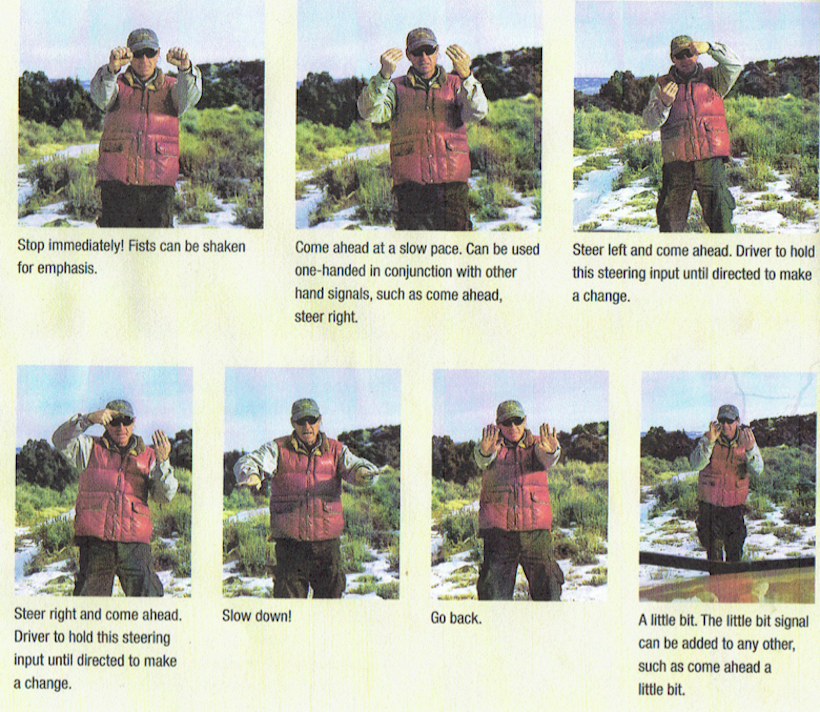
Additional Hand Signals:
While those are great fundamentals, I discovered a few more during the 2019 Overland Expo in Flagstaff Arizona.
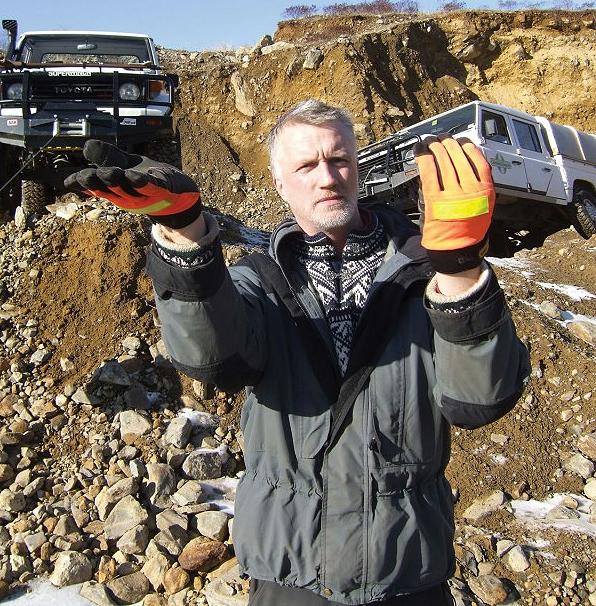
(Come forward – left side will go up)
With this signal, the spotter is signaling the drive to come forward, and also signaling them that the left side is going to come up.
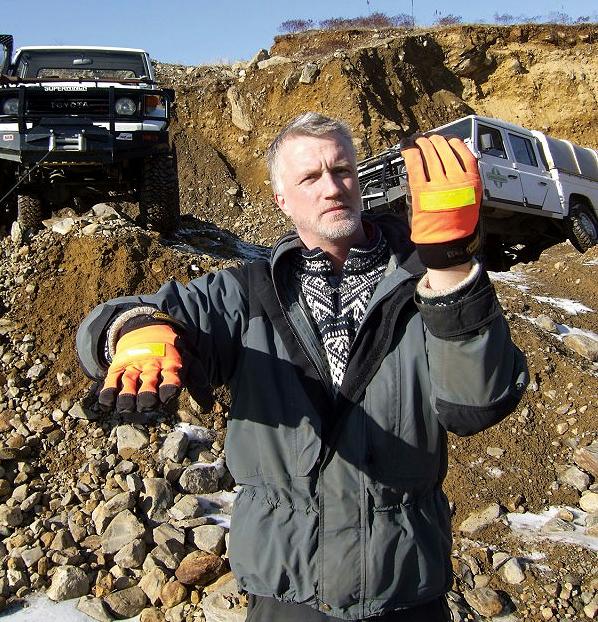
(Come forward – left side will go down)
Here the spotter is signaling that the left side is going to drop down. The hand is moved either up or down to indicate which direction is going to go. If he was referring to the right side of the vehicle, he would show it with his left hand.
I’ve even seen spotters swoop a hand down and then back up to let the driver know they were going to go down, but then back up. This is good when you want to let the driver know they are going to go in and out of a hole (dip).
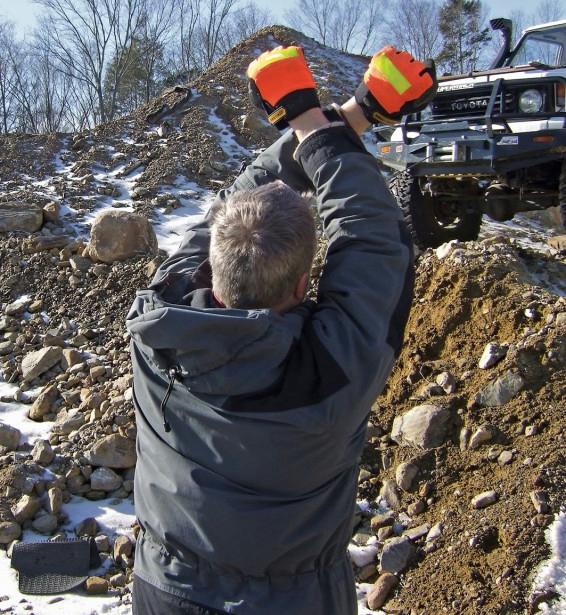
(Stop)
Stop can also be signaled by crossing your arms and closed fists.
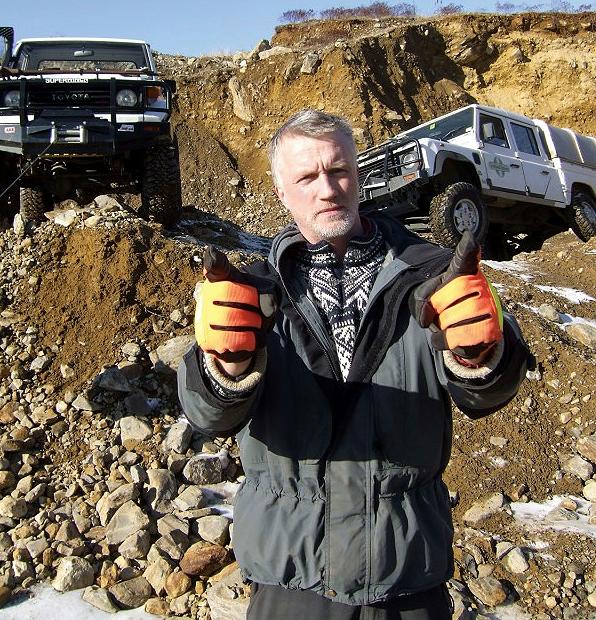
(Back up)
I like the idea of pointing towards the driver and moving towards them to signal that you want them to back up. I think this is a clearer signal that you want them to back up versus holding your palms up. I think holding your palms up could confuse the driver and make them think you want them to stop.
Video:
I think this video offers a pretty good visual explanation.
.
